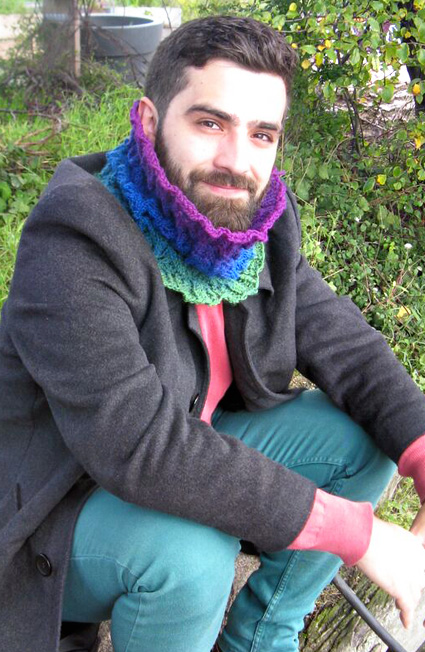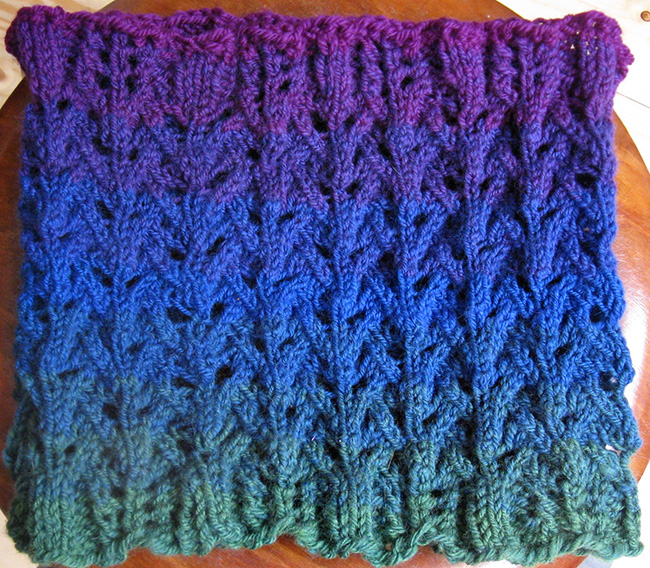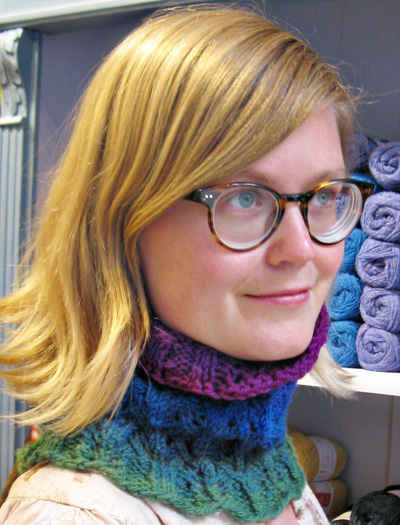

|
|
|

This deeply textured and cozy cowl was designed to show off a handspun gradient yarn, flowing smoothly from one color to the next. It is framed by a lacy rib, which flows into a lace pattern which is left unblocked to accentuate the texture. |
||
|
|
||
|
SIZE |
|
|
FINISHED MEASUREMENTS |
|
MATERIALS
Tools |
|||||
|
GAUGE |
|
PATTERN NOTES |
|
A drum carder will make this a quick and easy task. However, you can make similar blends on cards (or really just on one card) by doing the same layering with very wispy bits of each color (keeping the fibers aligned in the same direction) until the card is full, and then just peel it off the card. Repeat as needed – micromini-batts! You can also use a blending board, or just a flat surface upon which you build layers of fiber. Because you are using solid colored fibers, you are relying on optical blending to give the impression of a solid color. The more you blend the fibers, the more even your yarn will be. I recommend taking the time to be fussy about keeping the fiber aligned as you blend it. You want the fiber to remain fairly parallel, and the colors to be mixed a bit at a time. Three passes on a drum carder should be enough to blend the colors well. Instructions for the Long-Tail Cast On can be found here. Directions for Jeny’s Surprisingly Stretchy Bind Off can be found here. |

|
|
DIRECTIONS 
Place marker and join in the round, being careful not to twist the stitches. Lower Edge Body: Upper edge: Bind off in ribbing pattern using Jeny’s Surprisingly Stretchy Bind Off or the stretchy bind off of your choice. |
|
FINISHING |
| ABOUT THE DESIGNER |
|
|
|
Pattern & images © 2015 Christopher Kale. Contact Christopher |